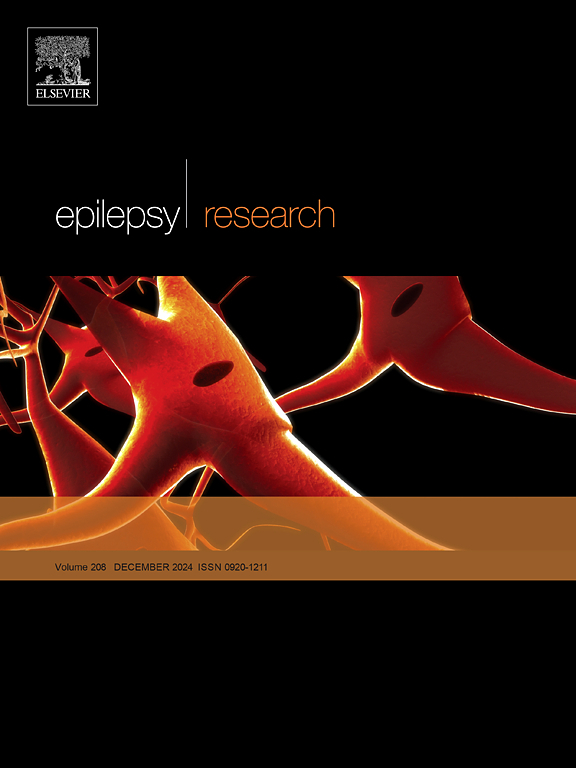Treatment of pediatric drug-resistant generalized epilepsy with responsive neurostimulation of the centromedian nucleus of the thalamus: A case series of seven patients
IF 2
4区 医学
Q3 CLINICAL NEUROLOGY
引用次数: 0
Abstract
Purpose
Responsive neurostimulation of the centromedian nucleus of the thalamus (CM RNS) is being investigated for treatment of drug-resistant generalized epilepsy with promising results. The aim of this study is to report outcomes of seven patients with pediatric-onset drug-resistant generalized epilepsy, including both genetic generalized epilepsy (GGE) and Lennox-Gastaut syndrome (LGS), who underwent treatment with bilateral CM RNS.
Methods
A retrospective chart review was performed for patients with drug-resistant generalized epilepsy who underwent treatment with bilateral CM RNS at Children’s Hospital of Pittsburgh from 2020 to 2022. Improvement in seizure frequency was obtained through patient and/or caregiver reports on standardized patient questionnaires. The primary outcome measure was percent improvement in seizure frequency at time of last follow-up appointment compared to baseline seizure frequency.
Results
Five of the seven patients (71 %) had an average 50 % or greater improvement in seizure frequency among seizure types including four of the five patients (80 %) with GGE and one of the two patients (50 %) with LGS. There were no serious adverse events including post-operative infection, stroke, or device malfunction/migration.
Conclusion
This data, along with other recent studies, suggests that CM RNS can improve seizure frequency in pediatric-onset drug-resistant generalized epilepsy, but larger systematic studies with longer follow-up times and standardized outcome measures are needed to determine long-term effectiveness and optimal patient selection for thalamic RNS.
求助全文
约1分钟内获得全文
求助全文
来源期刊

Epilepsy Research
医学-临床神经学
CiteScore
0.10
自引率
4.50%
发文量
143
审稿时长
62 days
期刊介绍:
Epilepsy Research provides for publication of high quality articles in both basic and clinical epilepsy research, with a special emphasis on translational research that ultimately relates to epilepsy as a human condition. The journal is intended to provide a forum for reporting the best and most rigorous epilepsy research from all disciplines ranging from biophysics and molecular biology to epidemiological and psychosocial research. As such the journal will publish original papers relevant to epilepsy from any scientific discipline and also studies of a multidisciplinary nature. Clinical and experimental research papers adopting fresh conceptual approaches to the study of epilepsy and its treatment are encouraged. The overriding criteria for publication are novelty, significant clinical or experimental relevance, and interest to a multidisciplinary audience in the broad arena of epilepsy. Review articles focused on any topic of epilepsy research will also be considered, but only if they present an exceptionally clear synthesis of current knowledge and future directions of a research area, based on a critical assessment of the available data or on hypotheses that are likely to stimulate more critical thinking and further advances in an area of epilepsy research.
 求助内容:
求助内容: 应助结果提醒方式:
应助结果提醒方式:


